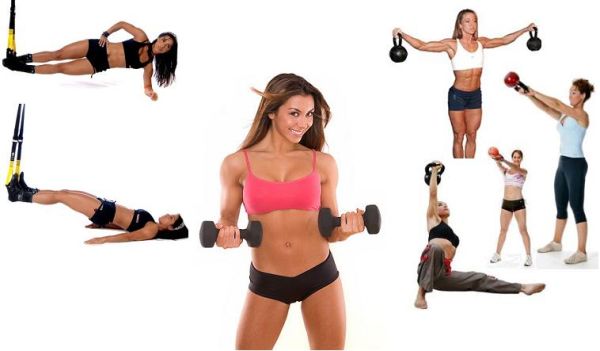Functional training
Hajdúné Petrovszki Zita
 http://www.stylemagazin.hu/hir/Trendi-edzesmodszer-avagy-a-funkcionalis-trening/5313/
http://www.stylemagazin.hu/hir/Trendi-edzesmodszer-avagy-a-funkcionalis-trening/5313/
Functional training is basically a new name to an already existing training method because athletes and weightlifters have been using this form of exercise for centuries. In everyday life, the purposeful and correct practice of intentionally used movements prepares our bodies and muscles for continuous stress and for the physical work we do. As a result, we can efficiently carry out the daily routines regardless of age, gender and fitness level. Functioning training does not focus on specific muscle groups, but always engages several muscle groups at a time, using more complex exercises. As one important feature, it uses practices for a full range of movements and for the whole body and its movements alternate on all three dimensions. Thus, the aim of functional training is to coordinate and strengthen the operation of all the muscles which take part in a particular exercise while we learn the right spine and pelvis postures, as well as the proper use of our bodies adequately to situations.
Functional training sessions develop both conditional and coordination abilities. Using its methods and tools with sufficient frequency can induce positive physiological and anatomical changes:
- It increases metabolism, helping to lose weight
- It positively affects the functioning of the cardiovascular system
- It helps in the prevention and rehabilitation of injuries
- It improves posture by strengthening the core stabilizing muscles
The exercises are based on movements encountered in everyday life; thus, squats, lifting, variations of pushing and pulling movements, form the basis for training. To make these more complex exercises possible to execute, we always need to stabilize our bodily position with our core muscles. Therefore, due to the effect of the functional workout the abdominal muscles as well as deep back muscles get strengthened, too. Unlike traditional body shaping and strengthening workouts, the functional training seriously takes into account the circulatory system, and thus it has its impact on our fitness and endurance.
The functional development of athletes goes beyond the enhancement of competitive performance because the trunk and joint stability, symmetry and muscle strength proportionality form the basis for the injury prevention. Priority is given to practical inclusion of enhanced stabilizations to dynamic sport movements, this way creating adequate basis for sport-specific work load. The exercises are challenging for athletes, since they often have to practice not on the usual, stable supporting surface. For some practices it is possible to implement different levels of difficulty with a slight change in the starting position or with lowering/raising the range of motions and the weight of the devices. If the athlete is unable to appropriately perform one of the tasks, then a change to a lower level is necessary and it is that level that needs to be practiced, abiding by the principle of building levels of difficulty on each other.
Functional training is an umbrella concept, and we can work very efficiently even without tools, using only your own body weight as the ballast; however, the proper use of tools along with the diversity of practices help us to mentally and physically exert ourselves while avoiding monotony.
The functional training often uses tools which help to engage such muscle groups responsible for maintaining the equilibrium position, which do not work or work very little in the situation of stable support.